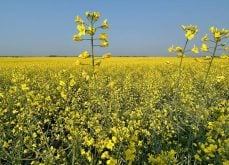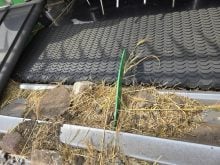Glacier FarmMedia – Approximately 50 per cent of the sugar beet acres in southern Alberta had been harvested in mid-October when Alberta Sugar Beet Growers held a tour to educate the public about the crop.
The ASBG represents 200 farm families in southern Alberta who manage 33,895 acres of quota under a recently signed five-year contract with Lantic Sugar, which includes an opt-out clause after three years. Growers farm near Vauxhall, Taber, Bow Island, Burdett, Tempest, Enchant and Hays.
“Under the Marketing of Agricultural Products Act, we are a marketing board,” executive director Jennifer Crowson told the 24 people on a bus as it made its way to a sugar-beet field operated by Gary Tokariuk.
Read Also

Stacking Canada up on gene editing livestock
Canada may want to gauge how Argentina and other countries have approached gene editing in livestock and what that has meant for local innovation.
“We do get the impression at times that we’re supply managed. However, we’re more production managed because we have one sole processor, and they get to tell us how many acres they’d like to process a year.”
The new contract guarantees that a minimum of 22,500 acres will be processed.

Beets are usually planted by late April, but marathon-length negotiations this year resulted in an agreement signed May 8. As a result, the crop wasn’t planted until May 14, creating uncertainty as to how harvest might unfold.
Last year, yields averaged at 32 tonnes an acre in a growing season that saw a wet spring and was cool overall.
“One thing with sugar beets is they really love the heat in the summer and irrigation,” Crowson said.
“They need about 20 inches of irrigation a year to be a successful crop. And then they also need the heat at the right time.”
Early estimates are for yields that will be similar to last year.
The crop can experience wild swings in temperatures.
“It’s crazy how temperature can change ” Crowson said.
“I live northeast of Vauxhall (10,000 acres of sugar beets grown), and I can drive to Taber in the morning, and it can be almost 10 degrees difference from my house to the office. It’s quite interesting. I think the big factor with that is probably the rivers that are to the north.”
The beets belong to Lantic once they are dug and in the company’s possession.
Farmers take the risk while the sugar beets are in the piles waiting for pickup, and so they share loading equipment to speed up the process in the race against frost in October.
Growers are paid for sugar content, and they shoot for 17.3 per cent extractable sugar. Crowson said they look to be on track for 2025.
The ASBG honours the top 10 producers every year for yield and sugar content across the seven growing areas.
Sugar beets are roughly 20 per cent sugar, with the rest being water and pulp/fibre.

Waste is minimized. When they are dug, the beets are topped and the leaves go back into the soil. When they go to the factory in Taber, they are washed, sliced and boiled, resulting in byproducts with sugar molasses and beet pulp.
“They will sell some of the wet beet pulp to some of the local producers for animal feed,” Crowson said.
“They also dehydrate it, dry it and then sell it for animal feed as well.The molasses that comes from sugar beets is usually used in animal feed because it’s quite tart. Some distilleries will use it in production as well, but it’s not usually your table version, like baking ginger snaps or something like that.”
Much like high-value potato growers, sugar beet farmers benefit from southern Alberta’s intricate canal and irrigation systems that provide moisture when Mother Nature is not co-operating.
“We live among all this irrigation and so we kind of take it for granted, but 70 per cent of Canada’s irrigation is located here in southern Alberta,” said Crowson.















